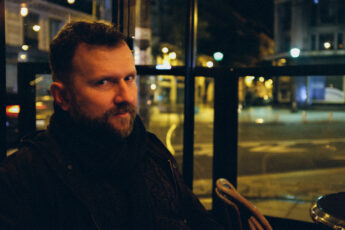Recurring Dreams and Repeating History
Vlad Petri’s The Same Dream (Același vis, 2021)
Vol. 117 (September 2021) by Zoe Aiano
With NATO’s 20-year intervention in Afghanistan coming to a catastrophic end, discussion is understandably centered on the responsibilities and failures of the major Western players, especially the US. However, throughout this whole period the wider international media landscape has paid little attention to the smaller countries also dragged into the quagmire in the name of “solidarity”. Vlad Petri’s latest documentary The Same Dream shifts the focus to the involvement of Romanian troops, using a critical lens to question the government’s motives for being so eager to sign up and to reflect on the repercussions of this engagement for both sides.
While the film itself is quite formally complex, the story it tells is a very simple moral tale, bordering on a parable. A Transylvanian soldier deployed in Afghanistan comes across a wounded child. He radios for help for her, but his request is denied – assistance is not provided to locals. Against his better judgment, he abandons her, but is haunted by her memory in his dreams. The girl, for her part, is bewildered by being unexpectedly caught up in an explosion and a brief encounter with a foreigner from a place she can only imagine.
Both countries in question are visually represented through contrasting yet strangely cohesive images. Afghanistan (which provides the backdrop while the soldier is talking) is seen through archival military recordings, a desolate non-space controlled by a combination of imposingly massive and insidiously hidden machines. Romania (shown as the girl’s side is retold), by contrast, is illustrated through picture-postcard, purpose-shot crisp images of an idyllic mountain village. They are also shown in opposing seasons, with Afghanistan in summer and Romania in winter. Despite these differences, long takes from both locations come together to form a shared dreamscape, binding the two distant places together.
The narrative itself is unusual in several ways. First, it is told through subtitles without any voiceover or any physical trace of the protagonists. With these standard markers of documentary “authenticity” removed, it becomes clear that the encounter is at least partially fictionalized, the girl’s version of events being entirely imagined. Although it could potentially be considered problematic for a male European filmmaker to speak on behalf of a young woman of a different culture, even a semi-fictitious one, the way her story is presented is very simple and tender, without any clumsy attempts at reconstructing a locally specific interpretation. The character created in this way is essentially just a child, describing their experiences as any child would, universalizing them. In any case, the ideological stance of the film is clear throughout – war deprives people of their humanity, and this is simply an attempt at trying to restore it.
One effect of the absence of voices, for example, is a lack of any clear division between the two narrators, and in some cases, it takes a while to realize that the narrative has shifted, something that is amplified by having the continuity of the two locations being shown in monochrome. There is a clear intention to keep the two accounts on a similar level of importance, in both cases providing a constant reminder of the lives upended by war, albeit in different ways. On the visual level, however, there is a progressive abstraction of the rare human figures shown, at least in the Afghan context. In a particularly harrowing sequence, we witness US troops shooting bodies at long range thanks to infrared cameras. The figures are almost reduced to intangible video game targets but still retain just enough of a recognizably anthropomorphic quality to their movements to prove that this is in fact a disturbing reality. Meanwhile, the soldiers communicate in an inscrutable code language clearly intended to create as much distance from the effects of their actions as possible. This progression, and the central story, mirror the way all those caught up in the war machine are systematically stripped of their empathy by being compelled to follow orders that would be abhorrent to them in normal times. In that sense, the case of the soldier offers some faint hope that at least not all of his emotional sensitivities had been eradicated, even if he failed to follow his own conscience in the moment.
Extrapolating out from this, The Same Dream problematizes the greater transnational dream of the allied forces, namely imposing its own value system on foreign states by force. Yet, while for much of the West the purported goal was to bring democracy, an opening quote from a Romanian minister at the time makes it clear that the stakes for Romania were that it was a prerequisite for acceptance into NATO and therefore acknowledgement as a global stakeholder. The film demonstrates the human cost of this ambition for both the invader and the invaded.
By an unfortunate coincidence, the film had its premiere almost exactly on the day that news first came of the Taliban taking Kabul after the withdrawal of the NATO forces. As such, at least for the near future, it is likely to be viewed and framed through the lens of these events, potentially leading to increased interest in it but also possibly overshadowing the film’s accomplishments. Despite drawing on a variety of disparate devices spanning both documentary and fiction, which could easily result in something messy and overcomplicated, The Same Dream manages to pull all the elements together to make something that is subtly coherent with many layers that only gradually become apparent, yet still fit in with the overarching concept. Most importantly, it manages to draw attention to the dehumanizing mechanisms of the military industrial complex while also maintaining a poetic and touching atmosphere.




Leave a Comment